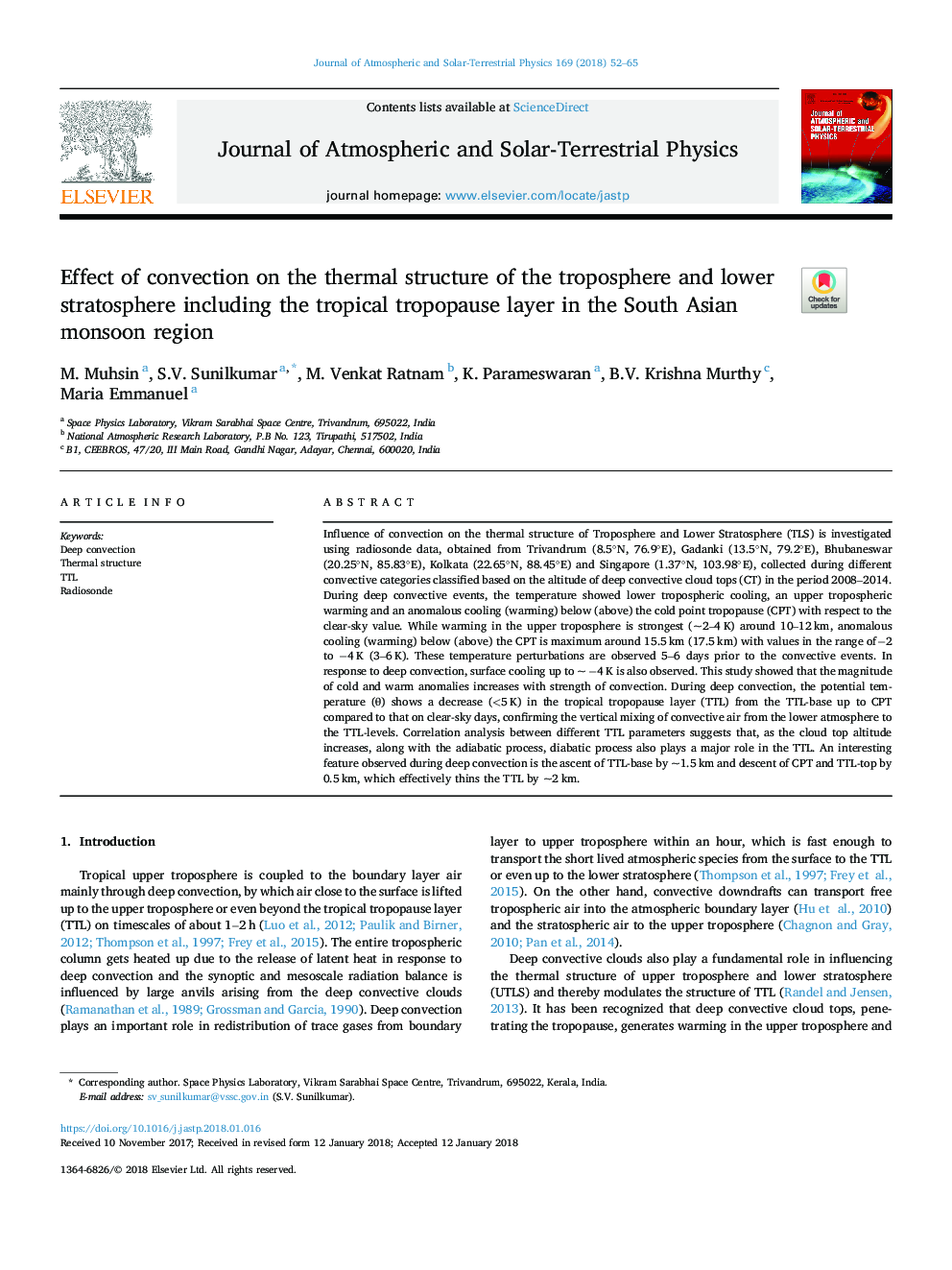| Article ID | Journal | Published Year | Pages | File Type |
|---|---|---|---|---|
| 8139650 | Journal of Atmospheric and Solar-Terrestrial Physics | 2018 | 14 Pages |
Abstract
Influence of convection on the thermal structure of Troposphere and Lower Stratosphere (TLS) is investigated using radiosonde data, obtained from Trivandrum (8.5°N, 76.9°E), Gadanki (13.5°N, 79.2°E), Bhubaneswar (20.25°N, 85.83°E), Kolkata (22.65°N, 88.45°E) and Singapore (1.37°N, 103.98°E), collected during different convective categories classified based on the altitude of deep convective cloud tops (CT) in the period 2008-2014. During deep convective events, the temperature showed lower tropospheric cooling, an upper tropospheric warming and an anomalous cooling (warming) below (above) the cold point tropopause (CPT) with respect to the clear-sky value. While warming in the upper troposphere is strongest (â¼2-4â¯K) around 10-12â¯km, anomalous cooling (warming) below (above) the CPT is maximum around 15.5â¯km (17.5â¯km) with values in the range ofâ2 to â4â¯K (3-6â¯K). These temperature perturbations are observed 5-6 days prior to the convective events. In response to deep convection, surface cooling up toâ¯â¼â¯â4â¯K is also observed. This study showed that the magnitude of cold and warm anomalies increases with strength of convection. During deep convection, the potential temperature (θ) shows a decrease (<5â¯K) in the tropical tropopause layer (TTL) from the TTL-base up to CPT compared to that on clear-sky days, confirming the vertical mixing of convective air from the lower atmosphere to the TTL-levels. Correlation analysis between different TTL parameters suggests that, as the cloud top altitude increases, along with the adiabatic process, diabatic process also plays a major role in the TTL. An interesting feature observed during deep convection is the ascent of TTL-base by â¼1.5â¯km and descent of CPT and TTL-top by 0.5â¯km, which effectively thins the TTL by â¼2â¯km.
Related Topics
Physical Sciences and Engineering
Earth and Planetary Sciences
Geophysics
Authors
M. Muhsin, S.V. Sunilkumar, M. Venkat Ratnam, K. Parameswaran, B.V. Krishna Murthy, Maria Emmanuel,
